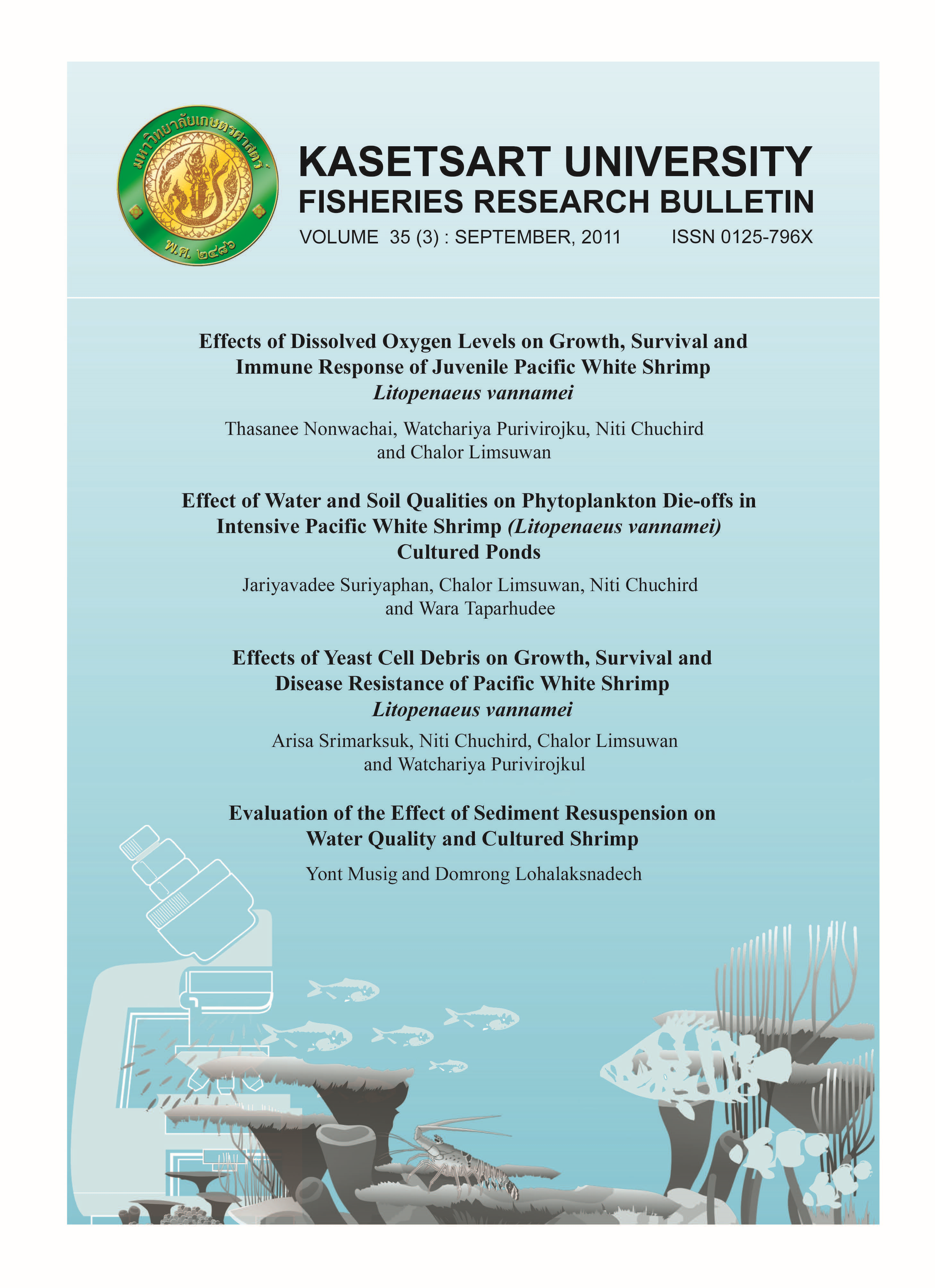Effects of Yeast Cell Debris on Growth, Survival and Disease Resistance of Pacific White Shrimp Litopenaeus vannamei
Main Article Content
Abstract
A 60-day growth trial was conducted with Pacific white shrimp (Litopenaeus vannamei) post-larvae (PL12) to study the use of yeast cell debris with three different formulations. Seven treatment diets were designed with yeast cell debris containing 45, 38 and 56% crude protein as formula A, B and C, respectively. Each formulation had two concentrations of yeast cell debris (1 and 5%). Commercial shrimp feed was used as the control. After 60 days of dietary administration, shrimp fed with 5% yeast cell debris of formula C had the highest average body weight, which was significantly different among all treatments. The survival rate of shrimp fed with yeast cell debris in all three formulations was higher than that of the control group. Disease resistance after challenge with a virulent strain of Vibrio harveyi (LD50 in 48 h) altered the survival rate in shrimp fed with 5% yeast cell debris of formula C to a significantly higher level than that of the control group. The results from this study suggest that the dietary administration of 5% yeast cell debris of formula C effectively enhanced growth and survival of L. vannamei postlarvae.


